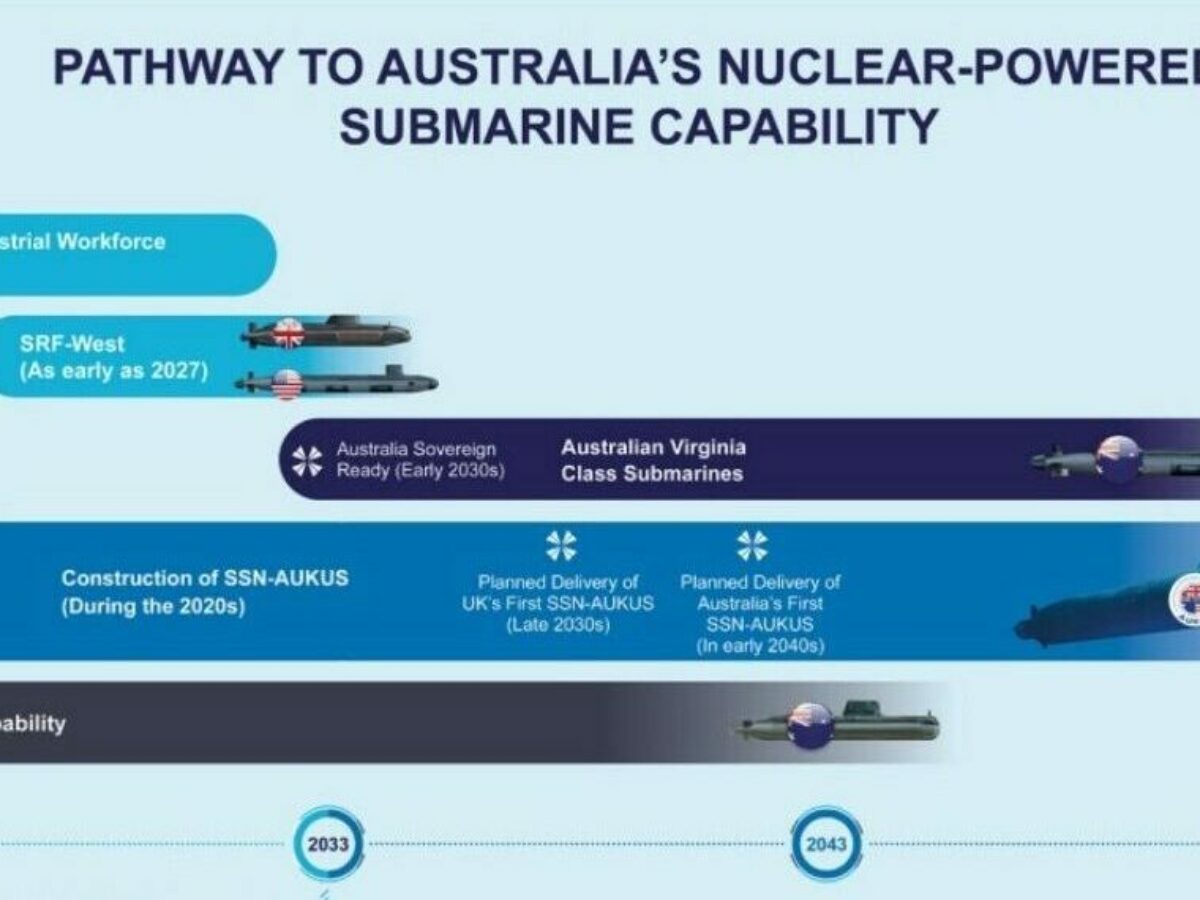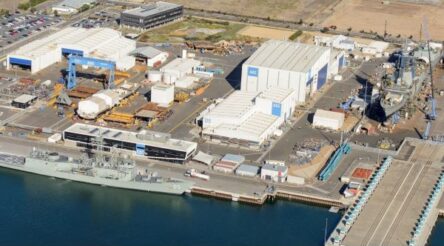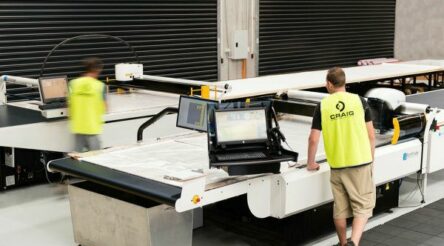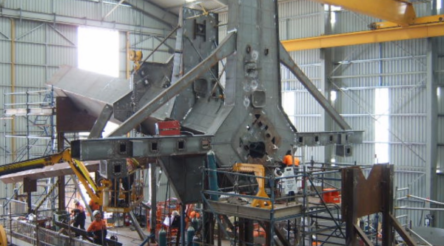Building a submarine industrial base – by Michael Slattery

SME manufacturers are sizing up what they know about plans for Australia to use US Virginia class submarines, then construct a UK design in Adelaide. Here Michael Slattery navigates what we know, and don’t know, only to emerge concerned that local manufacturing activity has been put off into a distant future.
Another announcement delivered by our State and Federal governments promoting jobs, education and security based on a future bespoke nuclear submarine designed principally by the UK, with input from the US and, purportedly, Australia. Eight British led AUKUS submarines will be built at Osborne in South Australia; no wait, maybe only seven of the eight.
It is stated in a joint media release from Defence Minister, Richard Marles, Defence Industry Minister Patrick Conroy and SA Premier Peter Malinauskus that “the work in South Australia begins right away – we are already investing in the workforce required and putting in place the infrastructure to support the build.” Very oddly, before the SSN AUKUS design work is even commenced, we’ll be starting construction work on a shipyard?
Logical questions aside, this shipbuilding work will be in the infrastructure sector, not the Defence sector.
But lets hold all thoughts and look at some timelines; firstly Australia will purchase between three and five second hand Virginia Class submarines. They’ll arrive in the early 2030’s, having given themselves time to put in place the necessary framework to take on responsibility for a reactor equipped vessel, and likely be based out of HMAS Stirling, Rockingham, Western Australia, where docking and maintenance will occur and $8 Billion will be spent.
As the Virginia boats arrive, for cost and crewing reasons, the first Collins Class submarine will retire. It won’t need a full cycle docking or a Life Of Type Extension (LOTE).
Work at Osborne in South Australia will stop.
The Department’s own AUKUS FAQ sheet shows the last early Collins FCD/LOTE boat making it through to 2045 (pictured).
With the Virginia boat operating out of HMAS Stirling, there will be a significant ‘valley of death’ in South Australia as we wait for the AUKUS submarine design to be finalised. Yes, we might see activities such as modelling, Expressions Of Interest, shortlistings and tenders in the lead up to design finalisation, but that’s about it…no income for SME’s
Those who were unsuccessful in getting work in the Hunter Class Frigate Program will be sceptical about work ever being contracted.
Whether we actually see the build work in South Australia is a legitimate question. After having a submarine programme go from an Australian designed ‘son of Collins’, we have seen plans for a Japanese submarine, a French submarine and now the promise of a US submarine followed by a British boat.
Governments can only really implement or be held accountable for their promises whilst in government.
In 2040 the eye watering $368 billion dollar bill will be biting and, with work on Collins having ceased in SA in the early 30’s, building in SA will be a political choice for the then government.
Even if you cast aside some justifiable scepticism, the Australian defence industry will likely see their first substantive contacts sometime in the 2040’s.
In the meantime and as early as next week we will see the announcement regarding the Defence Strategic Review (DSR) which is now being touted as a dual purpose approach to, firstly saving money for the astronomical AUKUS costs and, secondly to meet the updated force posture requirements and the needs of the ADF.
We are hearing a variety of rumours in the lead up to the DSR, these include a modification to the current continuous shipbuilding programme with the Hunter Class Frigate Program numbers being bandied about from nine to three to six and with various interruptions being six Corvettes and three more Air Warfare Destroyers.
Greater activities in ballistics and missiles, the Guided Weapons and Explosive Ordnance enterprise, greater emphasis on Air & Space and less on Land systems with the Land 400 Phase 3 programme being either quashed or reduced in numbers, something that may reduce the viability for the supply chain participants.
We may be sending our jobs offshore to the UK and US by stripping away the very programmes that the Australian defence industry needs to grow and develop in preparation for the SSN AUKUS.
The big hope for the Australian defence industry relies on Australian companies being included in US Virginia Class and UK Astute Class programmes to alleviate their workforce issues and increase their production.
This is complicated by the transfer of technology and security firewalls such as ITAR which, according to the AUKUS announcement, will be shared with Australia.
The bottleneck will be the cost and time for integration and sharing of such secrets.
Australia has again managed to paint itself into a corner by having to rely on other nations to provide the security and deterrents needed to keep our people safe from our biggest trading partner.
We need a realistic bipartisan 30-50 year industrial plan to develop and enact a truly national sovereign capability, one that benefits Australians for Australia’s sake.
We had the beginnings of such a plan when we built Collins, the boat that is still in service today, but we let it go.
I remember SA Premier Peter Malinauskus’ National Press Club address soon after he became Premier, where he talked about and compared a sophisticated industrial sector like Germany against Australia’s very unsophisticated economy largely built on selling resources.
This is an opportunity to develop a smart economy, instead we are leaving the design and prototyping to Britain who, as they see fit, will pass on the ‘as built’ drawings and plans complete with British specifications, equipment and supply chains to Australian industry some time around 2040.
In the meantime Australian industry will wait and hope that the DSR and work on other nations’ boats will fill the “valley of death” once again.
Michael Slattery is an experienced manufacturing business owner and manager, and a leader in the expanding defence industry sector.
Picture: Defence.gov.au/NPSTF
Topics Analysis and Commentary Defence
@aumanufacturing Sections
Analysis and Commentary Awards Defence Manufacturing News Podcast Technology Videos










